Newsletter

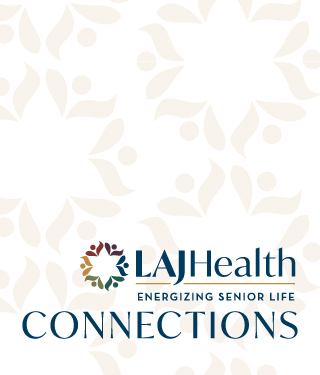
Our Newsletter
Connections
Oct
27
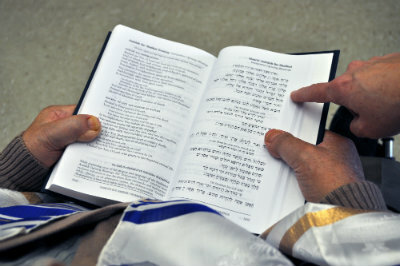
New Siddurim for a New Age
The siddurim, or prayer books, at the Los Angeles Jewish Home were worn with over three generations of use, lovingly touched by thousands of hands over the years. Through countless Shabbat and holiday services, the siddurim provided a foundation for seniors and their families to pray, celebrate, and mourn.
Now, through the generosity of supporters of the Jewish Home, the residents have new siddurim, ready to serve them for many years to come. Rabbi Karen Bender, Skirball Director of Spiritual Life, explains how this came to be. “When my predecessor, Rabbi Anthony Elman, began his retirement, he left behind his Rabbi’s discretionary fund. After many discussions about how to best use these funds, we agreed the purchase of new siddurim would benefit our seniors in so many ways.”
And they are more than just new. While the prayer books are Conservative-based, as were the ones they replaced, they offer several important improvements:
Transliteration: Many of our seniors who enjoy coming to services read English only. The most significant parts of the service are now available in transliteration so everyone can participate.
Gender inclusive language: The new siddurim avoids referring to G-d as “Him” and uses more inclusive language, such as referring to our foremothers by name in addition to our forefathers.
Contemporary translations: The prayer books offer accessible, modern and poetic English translations and readings that are very spiritually uplifting.
A great deal of research and effort went into selecting the siddurim. “We were careful to consider the size and weight of the book, as well as font boldness and clarity in both Hebrew and English,” says Rabbi Bender. “As you can imagine, there were many to choose from. I requested input from our seniors and Rabbi Ron Goldberg of the Eisenberg Village campus. In the end, we chose the 2016 printing of Siddur Hadash.”
Fortunately, the discretionary fund was large enough to purchase siddurim for both campuses, which is especially important due to the fluidity of our seniors between campuses.
In honor of Rabbi Elman, who is remembered with great fondness by both Jewish Home seniors and staff, a bookplate was placed in each siddurim, thanking him for his years of services.
“It’s a “Shehecheyanu” moment,” exclaims Rabbi Bender, “a moment of arriving at a special time!”
Oct
27
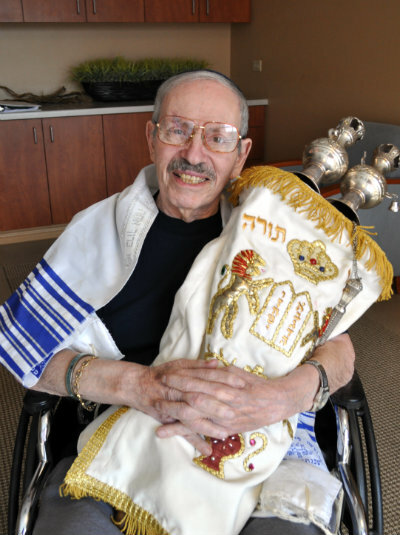
Celebrating Simchat Torah at Grancell Village
On Monday, October 24, Grancell Village residents celebrated Simchat Torah, or the “Rejoicing of the Torah.” During the celebration, 88-year-old Jewish Home senior John Sinasohn was one of several seniors to carry the Torah for the seven “Hakafot” processions it made around the Grancell Village synagogue.
“Dancing with the Torah is a thrill,” he says. “It’s a blessing to touch and hold the scrolls. I know my parents would be proud.”
John has had the opportunity to hold the Torah on this special holiday once before.
“The last time I held a Torah like this was in Germany in the year 1938.” John recalls, “My father was very involved in our synagogue. That year, we were given the honor of carrying the Torah during Simchat Torah. Less than a month later, the synagogue was burned down during Kristallnacht.”
Shortly after this act of violence, John’s parents sent him out of Germany. After traveling through Belgium, France, and Portugal, John moved to an orphanage in Los Angeles in 1943. Later, John met his wife Violet and took work as a writer, lawyer, and judge. John eased into retirement, working part-time fixing broken televisions before moving to the Home’s Joyce Eisenberg-Keefer Medical Center in 2011.
Here at the Home, John enjoys spending time with his wife and attending weekly lectures and services every Friday and Saturday and during the holidays.
“I’ve been lucky all my life. God has been very good to me.”
Oct
3
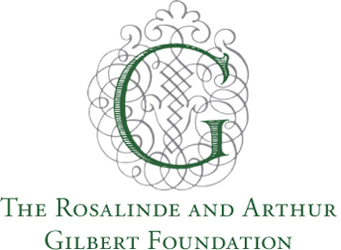
Gilbert Foundation Grant Supports Employee Education on Alzheimer’s Disease
The Goldenberg•Ziman Special Care Center at the Jewish Home provides exceptional care for individuals with Alzheimer's disease and dementia, and support for their families. The Center is known for its award-winning design, pioneering practices and technologies, and compassionate care.
One way the Goldenberg•Ziman Center excels in specialty care for seniors with Alzheimer’s disease and dementia is through employee instruction and training. Since its opening in 2002, the Goldenberg•Ziman Center has incorporated the “universal-worker” concept, where all staff members are involved in the residents’ care.
To continue the tradition of excellence at the Center and in the Home as a whole, further staff education was needed. A grant from the Rosalinde and Arthur Gilbert Foundation was received to make the training possible.
In order to develop a detailed Alzheimer’s disease caregiver training manual and toolkit, the Eisenberg Village (EV) administrative team partnered with University of California, Los Angeles associate professor and gerontologist Lené Levy-Storms, PhD.
Before selecting the curriculum for staff training, the administrative team surveyed the Home’s most experienced Alzheimer’s disease and dementia experts. After collecting data from 59 Jewish Home employees in one-on-one interviews, the team was able to capture valuable information about the staff’s best practices, personal experiences, and insights.
This information helped the Home’s administrative team create a detailed lesson plan that is now used in an extensive eight hour training session to be completed by all EV employees this month.
“These educational sessions are just one of the many ways we provide specialized training to our staff,” said Susan Leitch, community manager at the Goldenberg∙Ziman Special Care Center and Factor Nursing Building. “Our number one goal is to provide all of our seniors with the best care possible. Thanks to the generous grant from the Gilbert Foundation, we are able to give our staff the tools they need to serve our seniors with exceptional care.”
EV administrator Douglas Tucker considers the training session a fantastic learning experience for all employees. “By hosting educational sessions, our entire staff is able to benefit from the knowledge and experience of the Goldenberg•Ziman Center’s expert staff,” Douglas noted.
“The training we received provided me with clear guidelines on how to engage with seniors suffering from Alzheimer’s disease,” says Eisenberg Village certified nurse assistant Raquel Jaramillo. “Now I know how to learn from each individual and their unique situation in order to enhance their quality of care.”
For more information about the Jewish Home's Goldenberg•Ziman Special Care Center, please contact Susan Leitch, community manager, at [email protected] or (818) 774-3113 or visit our website.
Oct
3
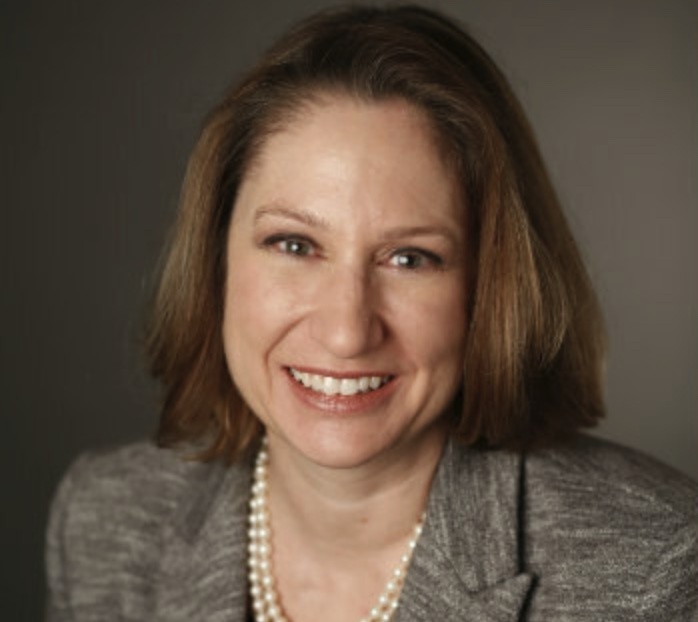
Employee Profile: Ilene Silberman
This spring, the Jewish Home was delighted to promote one of our own: Ilene Silberman, vice president of finance, has been elevated to the Home’s chief financial officer. In her new role, Ilene continues to showcase her talent and skills as a dedicated advocate on behalf of the organization’s sound fiscal health – maintaining our ability to serve thousands of Southern California seniors every year.
Ilene is a Certified Public Accountant and has over 25 years of combined experience in the accounting and finance fields. Before coming to the Home, she was controller for the Motion Picture Industry Pension & Health Plans (MPI), an agency that helps to administer defined benefit and defined contribution pension plans and provide health benefits to over 120,000 active and retired participants and their families. Ilene’s distinguished employment history also includes high-level positions in the commercial finance field with Wells Fargo Capital Finance, PNC Business Capital and Fleet Capital Corporation.
Ilene first came to the Home in 2015, but she is no stranger to the nonprofit community. A strong advocate for economic empowerment, she is a former volunteer tax preparer for elderly and low-income individuals. Ilene also served as an Executive Board Member and Vice President-Treasurer of the Emelita Street Elementary PTA, working to advance educational opportunities for young, school-aged children.
Ilene earned her BS in Business Administration – Accounting from California State University, Northridge, where she was on the dean’s list and served as an officer of the Accounting Association. She is married and has two children – a son and a daughter – and lives in Tarzana.
Sep
1
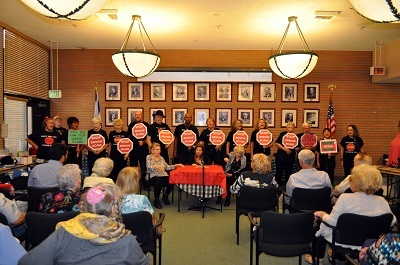
Stop Senior Scams Actors Perform at Eisenberg Village
On Thursday, August 4th, seniors from the Home’s Eisenberg Village campus gathered in the Zuckerman Boardroom to watch an informative performance from the Stop Senior Scams Acting Program.
Before the show began, 88-year-old Eisenberg Village resident and longtime Stop Senior Scams actress, Laurel Shapiro, was asked to take the stage. The Jewish Home senior was honored for seven years of dedication to the education of her peers. Field Deputy Tim Glick presented Laurel with a certificate from the office of Councilmember Bob Blumenfield and applauded her for her commitment.
Then, the group of talented performers acted, danced, and sang in a number of skits demonstrate the different ways scammers target seniors. A few of the common scams mentioned in the show were the grandchild, driver’s license, claim your prize, identity theft, online purchases, unpaid taxes, and obituary scams. At the end of each skit, actors shared important tips for avoiding scams like, if it sounds too good to be true it probably is; ignore unsolicited phone calls and emails that report to be the IRS; and memorize important numbers and leave confidential documents at home.
Using popular songs like the Rolling Stones’ You Can’t Always Get What You Want, Getting to Know You from the Rogers and Hammerstein musical the “King and I,” Abba’s Money, Money, Money, and the Supremes’ Stop in the Name of Love the troupe brought theatricality, laughter, and excitement to a commonly frightening and frustrating topic.
“One of the reasons our show works so well is because of the way we present the information.” longtime Stop Senior Scams actress Beverly Wyles says. “Our show is a memorable way to equip vulnerable seniors with the knowledge they need to protect themselves.”
The Stop Senior Scams Acting Program was founded by LAUSD acting instructor Adrienne Omansky in 2008. The one-of-a-kind troupe is comprised of 27 senior actors ranging in age from 60 to 98-years. Several of the group’s members write the skits they perform from experience. Each member of the group has, at some point, been the target or victim of a senior scam.
Program founder and director Adrienne has dedicated much of her time to educating Southern California’s seniors. In 2013, Adrienne and the senior scam group worked closely with the Los Angeles City Council to have one Thursday each May recognized as Senior Fraud Awareness Day in the city of Los Angeles. Adrienne explains importance of senior scam awareness. “Our program is here to share a serious message— fraud is everywhere and stopping senior scams begins with all of us.”
The group’s oldest actor, 98-year-old Peggy Mollin loves acting. She spends much of her time travelling with the group, visiting Los Angeles churches, temples, libraries, senior centers, and nursing homes, spreading the word about senior scams. “Over the years, I’ve lost a lot of money to insincere people.” Peggy shares, “I wanted to make sure the same thing wouldn’t happen to seniors like me.”
Jewish Home resident Joy Bernstein says, “This is a wonderful cause. There are a lot of seniors who aren’t aware of the tricks scammers have up their sleeves. Seniors everywhere should be able to watch this show and learn what to watch for.”
Laurel says, “The song at the end of the show gives seniors some wonderful advice. You can avoid a lot of scams when you—” She continues, singing to the tune of the Orlons’ 1962 hit Don’t Hang Up— “JUST HANG UP!”
Sep
1
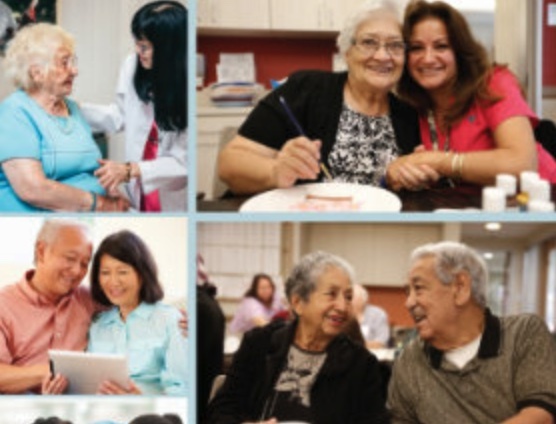
Jewish Home Hosts Nineteenth Annual Rhoda G. & Bernard G. Sarnat Symposium
For the nineteenth consecutive year, the Jewish Home will host its annual Sarnat Symposium on Wednesday, November 2, 2016. This year’s symposium, Creating Caring Connections for an Aging Society, will bring together some of the most progressive experts in the field of geriatrics to share their insight, research findings, and experience with social workers and other professionals who care for seniors. Six CEU credits are offered for those licensed as LCSW, MSW, MFT, BRN, NHAP, and RCFE.
Our diverse and dynamic speakers and topics include:
Freddi Segal-Gidan, PA, PhDUniversity of Southern CaliforniaWhat’s New in Alzheimer’s Disease and DementiaTim CarpenterEngAGEEngAGE: Transforming Senior CommunitiesDaniella Kaiserman, Esq.Borchard Fellow at Bet Tzedek Legal ServicesLegal Approaches to Elder Abuse: Advanced Planning, Restraining Orders, and Civil RemediesCathy A. Alessi, MDUniversity of California, Los AngelesSleep Interventions for Seniors: What Does the Research Tell Us?
In 1998, Rhoda and Bernard (of blessed memory) Sarnat made a generous gift to the Jewish Home to create an endowment to fund, in part, an annual conference on issues related to aging. The Rhoda G. & Bernard G. Sarnat Symposium was established to honor them and to promote the education of professionals in the field of geriatric care.
The Sarnat Symposium will be held at the Jewish Home’s Grancell Village campus located at 7150 Tampa Avenue in Reseda. Registration fee is $90 per participant. Senior and student discounts are offered. For more information, please click here.
Sep
1
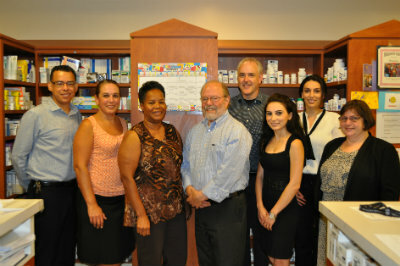
Honoring Our Own on World Pharmacists Day
On September 25th pharmacists all over the world will be celebrated in honor of World Pharmacists Day. This year’s theme is Pharmacists: Caring for You. The theme reflects the important role of pharmacists in providing care to the public and to highlight the emotional connection they have with their patients.
Among the unique and innovative services offered at the Los Angeles Jewish Home is an in-house pharmacy. Located in the Joyce Eisenberg-Keefer Medical Center (JEKMC) at Grancell Village, the Erwin Rautenberg Foundation Pharmacy plays a critical role in the lives of our seniors and the exceptional care they receive.
“It’s uncommon to have a pharmacy located in a nursing home,” says Bob Shmaeff, director of pharmacy services. “Proximity to our patients is a big advantage. We can deliver medications on a moment’s notice. It’s a full-service pharmacy geared to the needs of our seniors.”
The in-house pharmacy provides its staff the opportunity to review orders, confirm dosages, make sure medications are having the intended effects, and check for drug interactions and adverse drug reactions. “Because our pharmacy is located within JEKMC, our staff can visit with residents and establish one-to-one relationships. This helps create a connection and build trust. Our seniors know they can approach us at any time to share how they are feeling and ask any question they may have about their medications.”
“Bob and his team have been the recipients of several awards,” says Dr. Noah Marco, chief medical officer of the Jewish Home. “They participate in quality improvements efforts and mentor pharmacists that are completing their training. More importantly, our pharmacists make a difference in the lives of our residents by making sure each and every one receives the correct medication at the correct dose. They also ensure the resident’s doctor is aware of any potential safety issues regarding the prescriptions they write. Our residents love living at the Home, and our skilled pharmacists are a big part of the reason.”
Jerry Wahagheghe, director of nursing at JEKMC, shares Dr. Marco’s enthusiasm about the in-house pharmacy and its team. “It’s wonderful because there is no need to order medications from an outside pharmacy, which saves a great deal of time. Bob and his staff are amazing.”
“What I love most about my job at the Erwin Rautenberg Foundation Pharmacy is the ability to help our seniors live long, purposeful lives,” says Bob. “My staff and I have one goal: to deliver high quality pharmaceutical care to our residents. The end result is an average life span of 91 years at the Jewish Home, which is truly an accomplishment and a measure of success.”
We honor our amazing pharmacy staff who play a major role in providing high quality care to our seniors:
Robert Shmaeff, MPA Director of Pharmacy ServicesSean Boucher, PharmD Staff PharmacistJanice Hoffman, Pharmacist, PharmD Faculty in Residence Western UniversityMariam Khachatryan, PharmD Pharmacist ResidentAni Aramyan, PharmD, BCPS, CGP, Pharmacist for the Brandman CenterApril Gonzalez, TechnicianHenry Camas, TechnicianKathy Cardona, TechnicianJae Crawford, Biller/Technician
Sep
1

Growing During the High Holy Days
With the High Holy Days coming soon, Jewish Home e-Connections sat down with Rabbi Karen Bender, director of spiritual life for the Los Angeles Jewish Home, to discuss a central theme of the holidays: growth and change.
One of my favorite Jewish stories is attributed to the Chafetz Chaim, an influential Eastern European rabbi, 1839-1933. When asked how he had such an impact as a great sage and leader in the 20th century Jewish world, the Chafetz Chaim answered, “I set out to change the world but I failed. So I decided to scale back my efforts and only try to influence the Jewish community of Poland, but I failed there too. So I targeted the community in my home town of Radin, but achieved no greater success. Then I gave all of my effort to changing my own family, and failed at that as well. Finally, I decided to change myself, and that’s how I had such an impact on the Jewish world.”
The High Holy Days are about changing ourselves.
As 21st century American Jews, we tend to focus our efforts upon repairing what is wrong around us. Some are active on issues of social justice. This year some are active in the elections. Some are active in helping the Jewish community, including the Los Angeles Jewish Home. And, of course, this is so important as it constitutes Tikkun Olam, world repair. I, myself, hope to look back on my own life as a citizen of Los Angeles, an American citizen and as a Jew someday and be able to proudly say I made a difference in important causes and institutions.
We also need to heal and change our souls. The ten day period between Rosh Hashana and Yom Kippur is the ideal time to jump start that practice. During the High Holy Days we call it “Tshuva,” or “Repentance,” but I prefer to call it, “growing.” This work is never done. It is a lifelong process and opportunity. And for our residents this is extremely important. While most of them are past the point of truly being able to be activists with their time or resources, they can always improve as human beings and they do. They are my inspiration.
As Alan Morinis recounts in his book, Everyday Holiness, Rabbi Yerucham Levovitz guides his students along these lines in the following way. One beautiful Spring day, when a group of boys gathered in his house to study, the rabbi rushed into the room and had a very agitated look on his face. He cried out, “I just came from the street and I saw that all around me everything was growing. Why are you not growing!?”
Change is possible. Growth is imperative. You are like a garden.
Shana Tova!
Aug
1
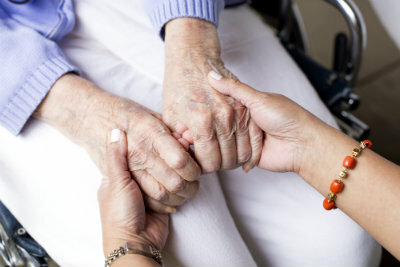
Palliative Medicine: Providing Comfort Care
Palliative care is specialized medical care for people with serious or life-limiting illness. It is both a philosophy of care and a process for delivering care, and focuses on providing relief from the symptoms and stress of illness and improved quality of life for the patient and their family. The primary objective is comfort for the individual or patient while they receive treatment consistent with their personal goals of care. Goals for care is the structure to which an individual’s palliative care plan is devised and thus very important.
What exactly is palliative care, or palliative medicine? How did it come to be? Who can benefit from it?
“Palliative” means to relieve or lessen without curing. Palliative medicine is often thought of as only a part of hospice care provided to someone who has been diagnosed with a fatal disease or illness. While palliative medicine is a crucial component and indeed grew out of hospice care, palliative medicine is a much broader specialty and can treat patients in various trajectories of their illness including alongside curative treatment. In 2006, palliative medicine became a board certified sub-specialty of internal medicine with specialized fellowships for physicians who are interested in the field. Today, palliative care may be provided in a hospital, cancer center, nursing home, outpatient clinic, hospices, or in the patient’s home.
Focusing on the symptoms of both the disease and the treatment, palliative care helps with a wide range of issues. These may include pain, depression, anxiety, fatigue, shortness of breath, constipation, nausea, loss of appetite, and difficulty sleeping. It also helps an individual to gain the strength to carry on with daily life and can help improve the ability to tolerate medical treatments. Palliative care also gives an individual more control over their care by improving their understanding of treatment options.
Palliative care is provided by a multi-disciplinary team made up of physicians, nurses, social workers, and other healthcare professionals who work together with an individual’s primary care physician and specialists. Treatment plans can include medication, massage therapy or relaxation techniques. Since palliative care treats the entire person, team members address social, psychological, emotional or spiritual needs the individual may have.
Anyone who is experiencing uncontrolled symptoms related to surgery or illness may benefit from palliative care. These illnesses include multiple sclerosis, cancer, congestive heart failure, kidney illness, stroke, ALS (Lou Gehrig’s disease), emphysema or COPD, and Alzheimer’s disease and dementia. If there is a sudden change in health due to heart attack, stroke, hip or spinal fracture, or a subtle onset, such as weight loss, pain, recurring infections, fatigue, avoiding food or medications, a palliative medicine consultation should be considered.
The Jewish Home Center for Palliative Medicine strives to provide comfort care to benefit the individual and support for their family. The team is led by Medical Director David Wallenstein, MD, who is board certified in Hospice and Palliative Medicine, and is the lead member of the Palliative Medicine Service at UCLA Medical Center. Dr. Wallenstein is also an Associate Professor at the UCLA David Geffen School of Medicine. Anne Moore, MSN, FNP-c, serves as the Center’s palliative service program manager. She is a board certified Family Nurse Practitioner, ELNEC trained and has over 30 years of experience in geriatrics and palliative medicine.
Palliative medicine services are covered under Medicare Part B, Medi-Cal, and most private insurance companies.
For more information about palliative medicine and the Jewish Home Center for Palliative Medicine, please call (818) 578-7427 or visit us online at www.skirballhospice.org/services/palliative-care.